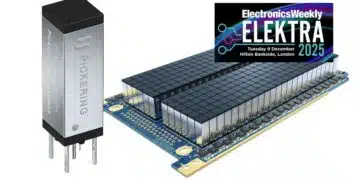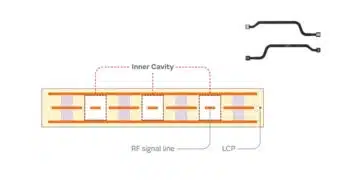Murata Manufacturing Co. Ltd has expanded its innovative range of multilayer ceramic capacitors (MLCCs) with yet another groundbreaking addition. Exemplifying Murata’s continual commitment for minimization, it has developed the world’s first 006003-inch size (0.16 mm x 0.08 mm) MLCC.
This achievement represents a volume ratio approximately 75% lower than the existing smallest product, the 008004-inch size (0.25×0.125mm).
In recent years, as electronic devices become more sophisticated and compact, the number of electronic components installed has increased, while simultaneously the space required for installation has been reduced.
As electronic devices continue to advance in intelligence, there has been a corresponding increase in the incorporation of MLCCs across all types of electronic devices, with the latest smartphones utilizing up to 1000 units. Against this background, there is a growing need for ultra-compact products that enable high-density component mounting with limited mounting space.
Since its inception in 1944, Murata has been committed to the exploration and advancement of ceramic capacitors, nurturing its unparalleled understanding of raw materials, manufacturing processes, and production technologies. In 2014, Murata successfully brought to market the world’s first 008004-inch size (0.25×0.125mm) multilayer ceramic capacitors, which have experienced growing utilization in smartphone modules and wearable devices. The creation of this MLCC is the outcome of years of focused R&D in elemental technologies, resulting in a device that measures just 0.16mm x 0.08mm x 0.08mm (L/W/T).
“Under our slogan ‘Innovator in Electronics’ we will continue to lead the electronics industry by providing innovative products and developing technologies,” said Hidetoshi Nakagawa, General Manager of Ceramic Capacitor Marketing at Murata Manufacturing Co Ltd. He continued, “This product is another world’s first in a long line of Murata’s market defining MLCCs and will significantly contribute to the future miniaturization and improvement of our customer’s electronic devices.”
































